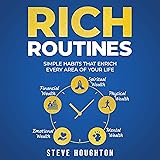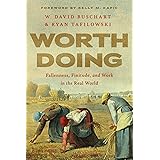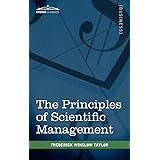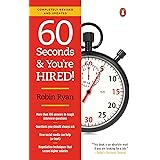The contemporary job market is relentlessly competitive, with desirable roles often attracting hundreds, if not thousands, of applicants within hours of posting. This inundation creates a significant hurdle for job seekers who genuinely wish to stand out. Many individuals believe filtering by ‘Past 24 hours’ on platforms like LinkedIn grants them an edge, only to find themselves one of many applying to an already crowded applicant pool. The challenge, therefore, lies not just in finding relevant opportunities, but in discovering them before the masses do. Fortunately, an advanced LinkedIn job search strategy exists that can empower you to circumvent this common pitfall, allowing you to be among the very first to apply.
The video above introduces a highly effective, yet rarely utilized, method for gaining a substantial advantage in your pursuit of prime career opportunities. It highlights a critical flaw in conventional LinkedIn job search filters and then unveils a sophisticated technique to overcome it. By understanding and implementing this strategic approach, you can dramatically increase your visibility to hiring managers and significantly improve your chances of securing an interview.
Understanding the LinkedIn Job Search Landscape
LinkedIn has become the de facto professional networking and job search platform globally. Its extensive database of roles and professionals makes it indispensable for career advancement. However, this very ubiquity contributes to a challenging environment for job seekers. When a highly sought-after position, such as a financial analyst role, goes live, it can attract a staggering volume of applications almost instantaneously. For instance, the video illustrates a scenario where a job posted merely 11 hours prior had already accumulated over 100 applicants.
This rapid accumulation of applications is a significant barrier. Applicant Tracking Systems (ATS) and human recruiters often review applications on a rolling basis. Consequently, those who apply later, even within the first 24 hours, might find their resume buried deep within a digital stack, potentially overlooked by the time the initial screening process begins. The “Past 24 hours” filter, while seemingly precise, groups all applications from the last day, failing to differentiate between a job posted one hour ago and one posted 23 hours ago. This lack of granularity is precisely where the competitive disadvantage arises for most users.
Unlocking Precision: Manipulating LinkedIn URL Parameters for Early Applications
The core of this advanced LinkedIn job search methodology lies in directly manipulating the URL parameters that LinkedIn uses to filter search results. After you apply your initial search criteria, including your desired position (e.g., “financial analyst”) and the standard “Past 24 hours” date filter, examine the URL in your browser’s address bar. You will observe a string of characters that represents your search queries.
Within this URL, a specific parameter governs the date filter. Typically, you will identify a segment that reads something similar to “equals R” followed by a numerical value. In the video’s example, this number was 86400. This seemingly arbitrary number is, in fact, the duration of your selected date filter expressed in seconds. A quick calculation confirms this: 86,400 seconds divided by 60 seconds (to get minutes) divided by 60 minutes (to get hours) equals exactly 24 hours.
Decoding the Time Parameter: How Seconds Translate to Opportunity
The brilliance of this strategy is its simplicity and directness. Once you locate the numerical value associated with the “Past 24 hours” filter (e.g., 86400), you possess the key to unprecedented precision. You can manually alter this number to represent a much shorter timeframe, effectively showing you jobs posted just moments ago. For example, if you change 86400 to 3600, you are filtering for jobs posted within the last hour (3600 seconds = 1 hour). Modifying it to 1800 would show jobs from the last 30 minutes, and 600 would reveal those from the last 10 minutes.
Upon making this modification and pressing Enter, LinkedIn reloads the job results, displaying only those opportunities published within your newly specified, narrow window. This significantly reduces the applicant count and places you at the forefront. The video vividly demonstrates this by showing a remote financial analyst job posted “24 minutes ago” with “zero people have applied” immediately after this URL manipulation. This immediate access to nascent postings can provide a critical early applicant advantage.
Beyond the Trick: Complementary Strategies for a Winning Application
While applying within minutes of a job posting offers a distinct competitive edge, it is crucial to remember that speed alone does not guarantee success. An exceptional application package remains paramount. Consider these complementary strategies to maximize your advantage:
- Tailor Your Resume and Cover Letter: Every application should be customized to the specific job description. Use keywords from the posting, highlight relevant experiences, and demonstrate how you align with the company’s values.
- Optimize Your LinkedIn Profile: Ensure your profile is complete, professional, and updated. It should reflect the skills and experiences pertinent to the roles you are targeting. Recruiters often cross-reference applications with LinkedIn profiles.
- Network Strategically: Connect with individuals working at your target companies or in your desired roles. Informational interviews can provide invaluable insights and potential referrals.
- Prepare for the Interview: If your early application secures an interview, thorough preparation is essential. Research the company, understand the role’s requirements, and practice answering common interview questions.
The Recruiter’s Perspective: Why Speed Matters
From a recruiter’s vantage point, the initial hours after a job posting are often the most productive. They typically monitor applicant flow and begin initial screenings relatively quickly. Early applicants are not just less numerous; they often signify a higher level of engagement and proactiveness. A recruiter’s inbox is less cluttered, allowing for more focused attention on the first wave of submissions.
Furthermore, in rapidly evolving industries or for niche roles, companies may move quickly to fill positions. Being an early applicant means your resume is seen before the role potentially gets pushed to a lower priority, or worse, taken down because an initial set of strong candidates has already been identified. This advanced LinkedIn filtering technique is about leveraging time as a strategic asset in the competitive arena of talent acquisition.
Advanced LinkedIn Filtering: Best Practices for Job Seekers
Implementing this precise URL manipulation requires a systematic approach to ensure you consistently capture the earliest opportunities. Here are some best practices:
- Regular Checks: Integrate this trick into your daily job search routine. Performing these filtered searches several times a day will maximize your exposure to the newest postings.
- Browser Bookmarks: Save different variations of the modified URLs for common job titles you seek. For example, have a bookmark for “Financial Analyst – Last 1 Hour” and another for “Marketing Manager – Last 30 Minutes.” This streamlines the process significantly.
- Combine with Other Filters: Remember, you can still apply other LinkedIn filters (e.g., experience level, location, remote work) before you modify the URL. The URL parameter manipulation simply refines the date posted aspect.
- Understand the Competitive Landscape: Recognize that while this strategy provides an edge, it does not replace the need for a strong resume, relevant experience, and effective networking. It is a powerful tool within a broader, holistic job search strategy.
By diligently applying this advanced LinkedIn job search strategy, job seekers can transcend the limitations of standard search functionalities. This direct approach to uncovering the freshest job postings offers a tactical advantage, enabling you to submit your application when competition is minimal and recruiter attention is at its peak. Embrace this secret to position yourself at the forefront of the talent queue and enhance your prospects in today’s demanding job market.









